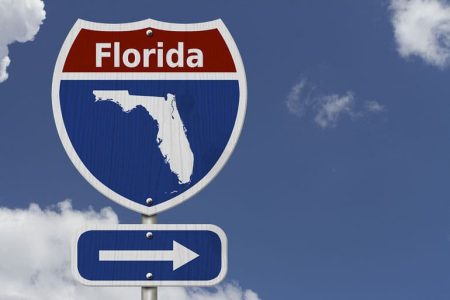There’s a new marketing push coming out of progressive circles called the “Abundance Agenda.” It’s meant to sound fresh and forward-thinking—a modern reboot from a party lacking a clear message.
But don’t be fooled by the slick language. What Democrats are pushing isn’t abundance—it’s central planning with a friendlier label. Beneath the shiny branding, this platform is the same old far-left prescription: more spending, more bureaucracy, more centralized control, and less individual agency and liberty.
The Abundance Agenda is summed up in the new book Abundance, which hit shelves last month. In it, liberal pundits Ezra Klein and Derek Thompson attempt to explain why Democrats have failed to fulfill decades of utopian promises and provide a path out of the political quagmire the liberal party finds itself in.
Essentially, the Abundance Agenda argues that government should strive to increase the supply of basic necessities—housing, healthcare, energy, education. If only elected officials would simply focus on building more homes and providing free healthcare, Klein and Thompson argue, all the country’s problems could be solved practically overnight.
On the surface, it seems like a bipartisan, common-sense idea – and it’s getting plenty of buzz in the liberal media and within Democrat circles. But digging into the details, it becomes evident that the Abundance Agenda leans heavily on massive public spending, expanded federal authority, and government-led “solutions” that stifle the very innovation they claim to support.
If Democrats were serious about prosperity, they’d focus on empowering communities and markets—not growing Washington’s influence. This “abundance” push is just packaging government expansion in feel-good terms to distract from the fact that the Democrat Party has no clue how to address the real challenges Americans face.
And Americans know it.
According to an April poll conducted by Atlas Intel, 84 percent of Americans believe the Democrat Party is facing a crisis of leadership. Even worse, 80 percent say Democrats don’t know how to effectively oppose President Donald Trump, and 68 percent agree the party is out of touch with the real issues affecting the country.
These aren’t outlier numbers—they’re an indictment on a party more interested in talking about solving problems than actually solving problems.
Look at the policies being floated under the “abundance” umbrella: High-speed rail, vertical agriculture, massive solar farms, and federally sponsored housing projects. All of that sounds visionary, but has either already been tried and failed or stands little chance of success. These initiatives will inevitably become tangled in regulatory delays, endless environmental reviews, and bloated costs.
California’s high-speed rail fiasco is a prime example: billions over budget, years behind schedule, and still not close to connecting major cities. Meanwhile, private airlines can transport you anywhere in the country in a few hours—for far less money.
This isn’t a one-off failure. It’s a pattern. Under the Biden administration, we saw billions allocated to electric vehicle charging infrastructure with almost nothing to show for it. Promises of rural broadband investment remain unfulfilled. Roads are still crumbling, despite passage of a trillion-dollar “infrastructure” bill. And while these bureaucratic schemes stall, private companies continue to innovate—faster, better, and more efficiently—without government handholding.
The truth is, real abundance comes from freedom, not federal programs. It comes from American entrepreneurs, small businesses, and workers—people who take risks, work hard, and build things. They create prosperity when the government steps aside and lets the free market do its job.
President Trump has a proven track record of unleashing our market economy to do what it does best. During his first term, he cut regulations, slashed taxes, and put American industry first. This resulted in wages rising, unemployment reaching historic lows, and innovation surging.
That wasn’t a coincidence—it was a direct result of conservative, pro-growth policies. And Trump is primed to do it again. That’s why American voters put their trust in him.
Compare Trump’s agenda with today’s Democrat priorities: regulating gas stoves, fighting culture wars, and micromanaging every aspect of American life from Washington, D.C. Even The New York Times recently acknowledged the party’s struggles, noting Democrats are “haunted by questions of competence” and lack a compelling contrast with Trump.
Instead of recalibrating, Democrats are doubling down—clinging to big-government solutions under the comforting label of “abundance.” But voters don’t want slogans. They want results.
Specifically, they want energy they can afford, homes they can own, jobs that pay, and a government that protects freedom. That’s not too much to ask. In fact, it used to be the bare minimum we expected from Washington.
So, what does real abundance look like? It looks like 3D-printed homes that cut building costs and timelines. It looks like next-gen nuclear energy that provides clean, reliable power. It looks like AI tools that help small businesses scale and compete globally. These innovations aren’t coming from Congress—they’re coming from the private sector, in spite of government interference, not because of it.
The truth is, the government doesn’t create abundance. It creates bottlenecks. It builds paper trails, not pipelines. If the left really wanted to unleash American potential, they’d focus on cutting red tape, streamlining regulations, and empowering people to succeed on their own terms—not under the watchful eye of a bloated federal agency.
We don’t need another top-down plan wrapped in a shiny slogan. We need a return to what made this country great in the first place: freedom, innovation, and hard work. The American people aren’t asking for handouts—they’re asking for the space to succeed. The more the government steps back, the more room there is for abundance to actually take root.
The next time Democrats try to sell “abundance” as a political solution, remember this: abundance doesn’t come from bureaucrats—it comes from builders. The sooner Washington understands that, the better off we will all be.
W.J. Lee has served in the White House, NASA, on multiple political campaigns, and in nearly all levels of government. In his free time, he enjoys the “three R’s” – reading, running, and writing.
Read the full article here











